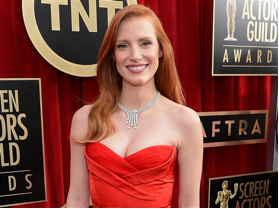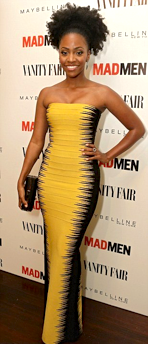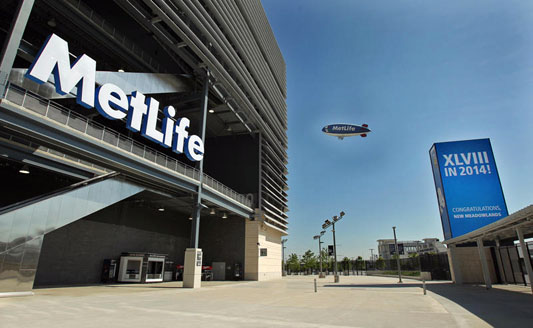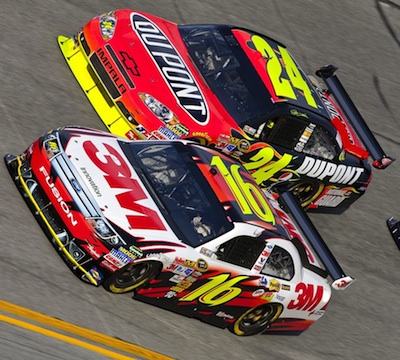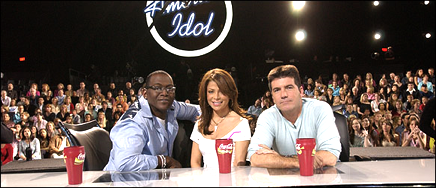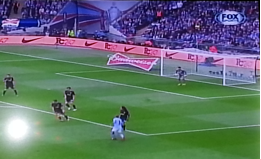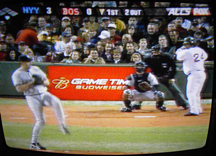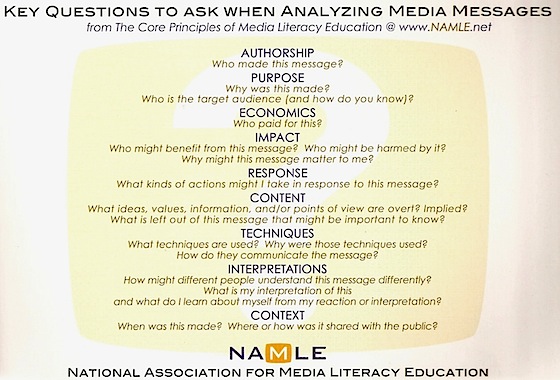Media Literacy: Making Sure Your (Brand) Name Is Out There
 by Frank W. Baker
by Frank W. Baker
Have you watched a major pop culture event on your TV or mobile screen and seen all of those celebrities who stop along the red carpet at a precise point, to have their pictures taken by the paparazzi?
Here’s actress Jessica Chastain posing at the 2013 Screen Actors Guild Award venue. Do you notice anything other than the actress? (Source)
And this is Teyonah Parris, posing at an event honoring the AMC series “Mad Men.”
Obviously, the manufacturers of the dress, as well as any jewelry the celebrity might be wearing, will receive a lot of attention. Hosts of those red carpet TV specials will make sure to ask “who are you wearing?” The audience, as well as many bloggers and other celebrity writers, will certainly take notice.
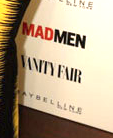
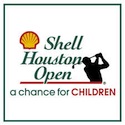
Every major sports stadium now has a brand name attached to it. The most recent Super Bowl game was played at MetLife Stadium in East Rutherford, New Jersey. (MetLife, of course, is the huge insurance company with the blimp, that’s attached its name to Charles Schultz’s Peanuts characters for many years.)
Even the parking lot at the stadium has sponsors:
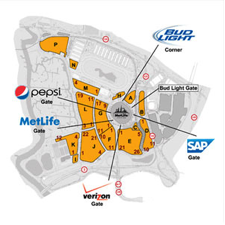
All of this is to say: somebody is after your eyeballs…and thus your attention (and maybe your devotion to the brand). No brand name is there by accident: some corporation paid to make sure it was there. In the media business, it’s known as “product placement.” And in 2014, it’s a multi-billion dollar business, pushing out into every aspect of media-related lives, including Facebook, Twitter, Skype and other popular digital services.
“American Idol” was one of the first reality TV series to feature cups of the soft drink product Coke, visible on the judges’ tables.
At the time, a vice-president for Coke was quoted in the news as saying the placement was more valuable than a 30-second commercial.
Now we have virtual ads that show up in sporting events. Using special effects generated in a TV control room, an ad can be placed virtually anywhere on the field. People sitting inside the stadiums don’t see the Budweiser ads below — they are created specifically for the much larger television audience.
(images by Frank Baker)
Here’s the media literacy lesson
So what does all of this mean? And if you’re a classroom teacher, why should you care?
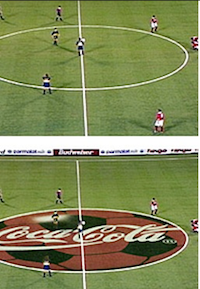
What TV saw
Today’s young people ARE the media generation: they pay attention to television, movies, sports, music and more. But oftentimes, I am told by the educators I work with, they don’t watch with any critical viewing skills. They tend to believe everything they see, read and hear. They’re certainly not asking: why was that ad in the background? Or, is that really in the stadium or pasted on the video to influence me?
A major objective of media literacy education, now recognized by many national organizations, is to get our young people thinking critically about why a particular message might have been placed where it was and who benefits from that placement. We may always be consumers, but we can become savvy consumers through media literacy education.
Introducing the concept of “product placement” (using pop culture images and sporting events) is a great way to jump-start your students’ critical viewing and media literacy skills. They should be given opportunities to ask these media literacy questions that can help make them smarter, wiser and engaged communicators in a 21st century world.
Frank W. Baker is a media literacy education consultant and the author of three books, including Media Literacy In the K-12 Classroom (ISTE, 2012). He contributed two chapters to Mastering Media Literacy (Solution Tree, 2014). In November 2013, Frank was a co-recipient of the National Telemedia Council‘s annual Jessie McCanse Award given for individual contributions to the field of media literacy over at least 10 years. Follow him on Twitter @fbaker.

